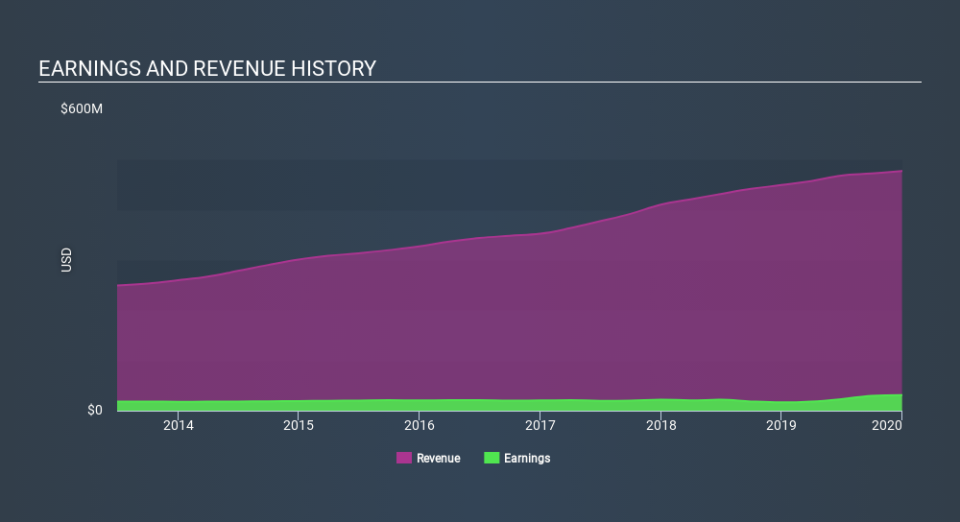What Kind Of Share Price Volatility Should You Expect For U.S. Physical Therapy, Inc. (NYSE:USPH)?

Anyone researching U.S. Physical Therapy, Inc. (NYSE:USPH) might want to consider the historical volatility of the share price. Volatility is considered to be a measure of risk in modern finance theory. Investors may think of volatility as falling into two main categories. The first category is company specific volatility. This can be dealt with by limiting your exposure to any particular stock. The second type is the broader market volatility, which you cannot diversify away, since it arises from macroeconomic factors which directly affects all the stocks on the market.
Some stocks see their prices move in concert with the market. Others tend towards stronger, gentler or unrelated price movements. Beta can be a useful tool to understand how much a stock is influenced by market risk (volatility). However, Warren Buffett said 'volatility is far from synonymous with risk' in his 2014 letter to investors. So, while useful, beta is not the only metric to consider. To use beta as an investor, you must first understand that the overall market has a beta of one. A stock with a beta greater than one is more sensitive to broader market movements than a stock with a beta of less than one.
View our latest analysis for U.S. Physical Therapy
What we can learn from USPH's beta value
Zooming in on U.S. Physical Therapy, we see it has a five year beta of 1.37. This is above 1, so historically its share price has been influenced by the broader volatility of the stock market. Based on this history, investors should be aware that U.S. Physical Therapy are likely to rise strongly in times of greed, but sell off in times of fear. Share price volatility is well worth considering, but most long term investors consider the history of revenue and earnings growth to be more important. Take a look at how U.S. Physical Therapy fares in that regard, below.
How does USPH's size impact its beta?
With a market capitalisation of US$1.0b, U.S. Physical Therapy is a small cap stock. However, it is big enough to catch the attention of professional investors. It has a relatively high beta, which is not unusual among small-cap stocks. Because it takes less capital to move the share price of a smaller company, actively traded small-cap stocks often have a higher beta that a similar large-cap stock.
What this means for you:
Since U.S. Physical Therapy has a reasonably high beta, it's worth considering why it is so heavily influenced by broader market sentiment. For example, it might be a high growth stock or have a lot of operating leverage in its business model. In order to fully understand whether USPH is a good investment for you, we also need to consider important company-specific fundamentals such as U.S. Physical Therapy’s financial health and performance track record. I urge you to continue your research by taking a look at the following:
Future Outlook: What are well-informed industry analysts predicting for USPH’s future growth? Take a look at our free research report of analyst consensus for USPH’s outlook.
Past Track Record: Has USPH been consistently performing well irrespective of the ups and downs in the market? Go into more detail in the past performance analysis and take a look at the free visual representations of USPH's historicals for more clarity.
Other Interesting Stocks: It's worth checking to see how USPH measures up against other companies on valuation. You could start with this free list of prospective options.
If you spot an error that warrants correction, please contact the editor at editorial-team@simplywallst.com. This article by Simply Wall St is general in nature. It does not constitute a recommendation to buy or sell any stock, and does not take account of your objectives, or your financial situation. Simply Wall St has no position in the stocks mentioned.
We aim to bring you long-term focused research analysis driven by fundamental data. Note that our analysis may not factor in the latest price-sensitive company announcements or qualitative material. Thank you for reading.

 Yahoo Finance
Yahoo Finance 
